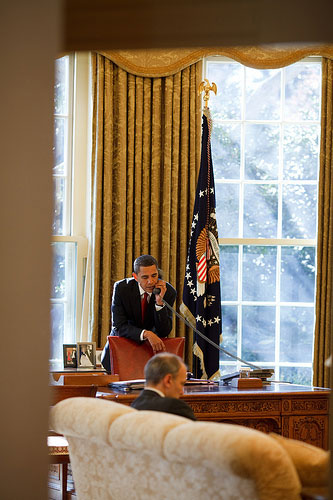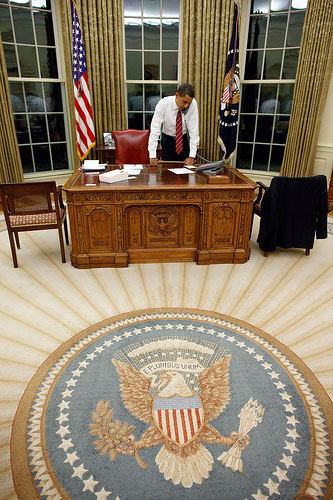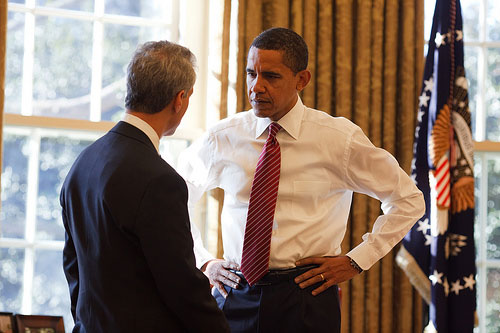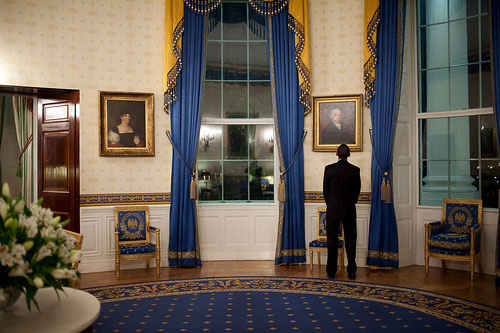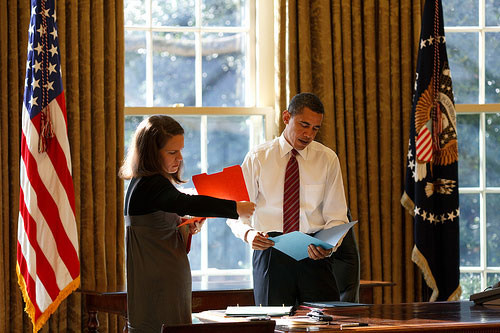Conclusion
The fundamental quest behind African-American social history has been the achievement of freedom. Over the centuries, "freedom" has meant different things to different generations. To the slaves, it literally meant the end of human bondage. For nearly 250 years, African Americans were defined by law as property and not as human beings. Then for another century, we experienced Jim Crow segregation, lynching, disenfranchisement, the burning down of our businesses and churches, and other forms of racial harassment. Today, with the election of Barack Obama, 44th President of the United States and the first African American to hold the office, many suggest that Americans have entered a "post-racial period." Some argue that it would be impossible to elect a person of color to the presidency if the old racial stereotypes and discrimination still existed.
At a certain level, one part of this thesis is true. Legal segregation has been outlawed in the United States for nearly fifty years. It is no longer legal to deny African Americans access to restaurants, hotels, bathrooms, public buildings, elevators, or other public accommodations. In the 1960s, there existed only several hundred African-American elected officials; by the year 2000, there were over 10,000 Black elected officials throughout the United States. In 1964, there were five Black congressional representatives; today there are over forty, many of whom chair powerful committees in the House of Representatives, such as Charles Rangel, chair of the House Ways and Means Committee. If all of the goods and services purchased by Blacks in the United States were calculated as the global economy of a country, Blacks would represent the ninth wealthiest nation on earth.
Despite these gains, the struggle for freedom remains elusive. The Black unemployment rate remains nearly twice as high as white jobless rates. African Americans have significant shorter life expectancies than whites and overall, receive substandard health care. While White home ownership exceeds seventy percent, Black home ownership is below forty-five percent and falling rapidly due to the recession of 2008-2009. The typical Black household has less than one-tenth of the net wealth of the average White household. These statistics as well as many others, indicate that there is structural racism that is deeply imbedded in the American system. The great challenge to American democracy is to fulfill its principles of quality for the law and fairness regardless of race, gender, and class distinctions. The African-American freedom struggle has sought to make democracy real for all Americans. The Amistad Digital Resource has presented episodes of that history for students, teachers, and researchers. This resource has been designed primarily as a teaching tool to be used in the classrooms by teachers to bring history "to life." We sincerely hope that the concept of living history may assist a new generation of Americans to understand the history that all of us share and to better appreciate the Dream of Dr. Martin Luther King, Jr.
Related Resources
Barack Obama, A More Perfect Union, Philadelphia, Pennsylvania, March 18, 2008. Available online at http://my.barackobama.com/page/content/hisownwords. Last accessed December 5, 2008.
Barack Obama, Keynote Address at the 2004 Democratic National Convention, Boston, Massachusetts, July 27, 2004. Available online at http://www.barackobama.com/2004/07/27/keynote_address_at_the_2004_de_1.php. Last accessed December 5, 2008.
President Barack Obama calls Senators from the Oval Office.
Phil Schiliro Assistant to the President for Legislative Affairs is seated 2/6/09.
Source: Official White House Photo by Pete Souza.
President Barack Obama in the Oval Office 1/30/09.
Source: Official White House Photo by Pete Souza.
President Barack Obama with Chief of Staff Rahm Emanuel in the Oval Office 2/5/09.
Source: Official White House Photo by Pete Souza.
President Barack Obama in the Blue Room, 2/9/09.
President Barack Obama looks at a portrait of President James Madison while waiting in the Blue Room prior to his press conference in the East Room 2/9/09.
Source: Official White House Photo by Pete Souza.
President Barack Obama in the Oval Office.
President Barack Obama looks at daily correspondence in the Oval Office with his personal secretary Katie Johnson 1/30/09.
Source: Official White House Photo by Pete Souza.
A Civil Rights Movement, Still in Motion.
Black civil rights leaders and young students alike discuss how Sen. Barack Obamas successful bid for president surpassed their highest expectations. NBCs Tom Brokaw reports.
Source: NBC News / iCue.

